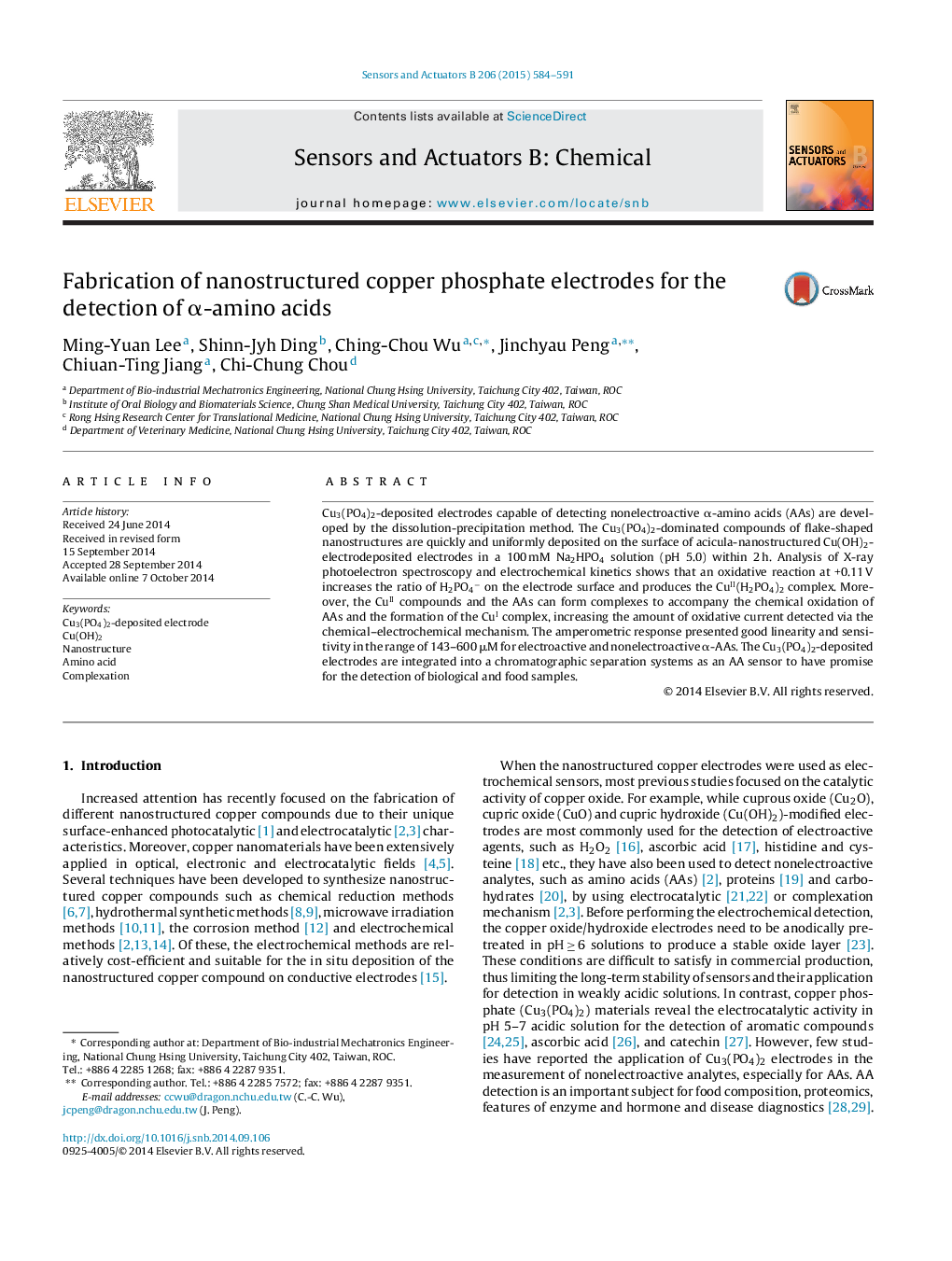| Article ID | Journal | Published Year | Pages | File Type |
|---|---|---|---|---|
| 744405 | Sensors and Actuators B: Chemical | 2015 | 8 Pages |
Cu3(PO4)2-deposited electrodes capable of detecting nonelectroactive α-amino acids (AAs) are developed by the dissolution-precipitation method. The Cu3(PO4)2-dominated compounds of flake-shaped nanostructures are quickly and uniformly deposited on the surface of acicula-nanostructured Cu(OH)2-electrodeposited electrodes in a 100 mM Na2HPO4 solution (pH 5.0) within 2 h. Analysis of X-ray photoelectron spectroscopy and electrochemical kinetics shows that an oxidative reaction at +0.11 V increases the ratio of H2PO4− on the electrode surface and produces the CuII(H2PO4)2 complex. Moreover, the CuII compounds and the AAs can form complexes to accompany the chemical oxidation of AAs and the formation of the CuI complex, increasing the amount of oxidative current detected via the chemical–electrochemical mechanism. The amperometric response presented good linearity and sensitivity in the range of 143–600 μM for electroactive and nonelectroactive α-AAs. The Cu3(PO4)2-deposited electrodes are integrated into a chromatographic separation systems as an AA sensor to have promise for the detection of biological and food samples.
